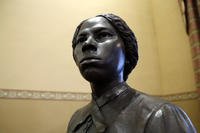"Yesterday, Dec. 7, 1941, a date which will live in infamy ..." Americans of what Tom Brokaw calls the "Greatest Generation" will never forget President Franklin D. Roosevelt's "Day of Infamy" address or the devastating Japanese attack on Pearl Harbor that inspired it. Memories of that day and the war that followed still attract them and many members of younger generations to World War II sites in Hawaii.
The Arizona Memorial, which straddles the sunken hull of the USS Arizona at Pearl Harbor Naval Base in Honolulu, Hawaii, is probably the most visited of all the war's monuments. The remains of 1,177 crew members are still entombed in their battleship, destroyed by Japanese bombs during the surprise attack.
The battleship Missouri is moored within view of the Arizona. If the Arizona represents the beginning of the war for the U.S., then the Missouri represents the end. The surrender documents ending the Pacific War were signed aboard the "Mighty Mo" in Tokyo Bay on Sept. 2, 1945.
Many thousands of people flock every year to these two World War II battleships, which form "bookends" to America's involvement in the war. But for a more complete picture of World War II in Hawaii, visitors should venture beyond the shores of Pearl Harbor. While the ships and naval base here burned on Dec. 7, 1941, other military facilities elsewhere on Oahu lay in ruins. Throughout the war, other Hawaiian islands, especially Maui and Hawaii, saw a huge influx of American servicemen.
Following the Attack Across Oahu
The same Japanese attack that sank most of the U.S. fleet's principal ships in Pearl Harbor also devastated the airfields at Hickam, Wheeler, Bellows, and Kaneohe. Hundreds of planes were destroyed on the ground, and hundreds of men were killed or wounded.
Today, anyone can trace the Japanese flight line across Hickam Air Force Base and Wheeler Army Base, where barracks, hangars, planes and men fell victim to the enemy attack. Period U.S. planes are on display at both bases. Visitors may continue along the attackers' path to Bellows Air Field, a former Air Force communications site, now a training and recreation installation; and Marine Corps Base Hawaii at Kaneohe Bay, a naval patrol plane base before the Pearl Harbor attack.
On their way to Wheeler Field and Pearl Harbor, the Japanese also flew over Schofield Army Barracks. A museum here is dedicated to the 25th Infantry, which served in World War I, World War II, the Korean, Vietnam, and Gulf Wars. The movie "From Here to Eternity" was filmed in this area.
Battery Randolph in Honolulu was part of the coastal artillery defense of Oahu until the Japanese attack proved it to be obsolete. Its guns were dismantled and scrapped in 1946. In 1976, it became the Fort Derussy Army Museum. Located on Waikiki Beach, it traces the military history of the Army in Hawaii and the Pacific area.
On Maui
The war came to Maui on Dec. 15, 1941, when two shells from a Japanese submarine landed in Kahului Bay and grazed the Maui Pineapple Cannery. The death toll consisted of one chicken, and there was only minor damage to the cannery. In 1942, however, 24 men were killed when a Japanese torpedo sank the Army transport Royal T. Frank within sight of land between Maui and Hawaii.
During the war, there were nearly 50 military training sites on Maui. The Army trained soldiers at Kula and Paukukalo and operated hospitals at Waikapu and Makawao. The Navy trained air groups at a Kahului station and demolition teams at Kihei. Marine exercises were held all over the island. Camp Maui in the Kokomo area became a rest and recreation camp for the 4th Marine Division. Marines hiked up to Haleakala crater and held amphibious maneuvers on the southern beaches from Maalaea Bay to Makena.
Concrete bunkers and bomb casings scattered along the contemporary landscape from Kula to Makena are reminders of the Puunene Naval Air Station, once located between Kihei and Puunene. Veterans of the 4th Marine Division still maintain a park at the former site of the Kahului Naval Air Station, now known by the military acronym NASKA. This countryside park is near a knoll still known as Giggle Hill, where off-duty Marines entertained the local girls.
The Island of Hawaii
At Waimea on Hawaii, Marine survivors of the costly capture of Betio in the Tarawa Atoll were encamped in a tent city named Camp Tarawa. Here, they honed their artillery skills and trained for amphibious assaults. The Marines who raised the flag on Iwo Jima's Mount Suribachi trained at Camp Tarawa.
Today, the Camp Tarawa Monument, dedicated in 1998, is there on the Mamalahoa Highway across from Paniolo Park. A plaque honors both the Second and Fifth Marine Divisions for battles in the Pacific during World War II. Three granite markers are a tribute to the Fifth Amphibious Corps.
Well Worth the Trip
Most of these sites are easily accessible from ports of call of ships of the American Hawaii Cruises; call (800) 765-7000 for information. The Oahu sites are either in Honolulu or within driving distance of the city. Visitors will find sites on the other two islands also are accessible by car — from Kahului on Maui and from Hilo on Hawaii.
In Honolulu, a seven-hour "Home of the Brave" tour advertises pickups at various Waikiki locations. Stopovers are made at the Arizona Memorial, Hickam Air Force Base, Wheeler Army Air Base, Schofield Army Barracks, Punchbowl National Memorial, and more. For reservations, call (808) 396-8112.















